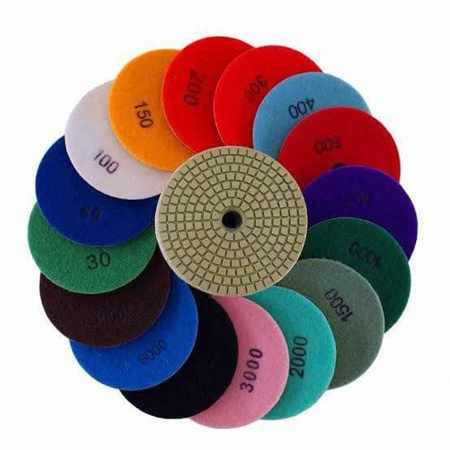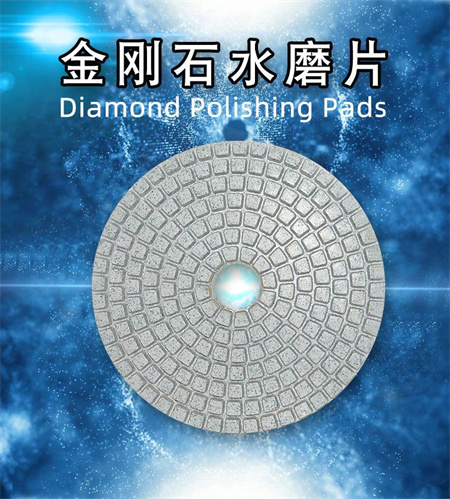Title: Comparing Wet and Dry Diamond Pads for Stone Care
When it comes to maintaining the pristine condition of stone surfaces, choosing the right tools is crucial. Among these, diamond polishing pads play a pivotal role. For professionals dealing with granite, marble, or concrete, the choice often comes down to wet versus dry diamond pads. Each type has its unique benefits, applications, and considerations. Let’s dive into a detailed comparison to help you make an informed decision.
Wet Diamond Pads: The Traditional Choice

1. Superior Finish Quality: The primary advantage of wet diamond pads is their ability to produce a high-quality, glossy finish. The water helps to reduce friction and heat, minimizing the risk of burning or damaging the stone surface. This makes wet pads ideal for achieving a mirror-like shine on granite and marble countertops.
2. Dust-Free Operation: Because the process involves water, wet diamond pads significantly reduce the amount of dust generated during polishing. This not only creates a cleaner work environment but also reduces the need for extensive cleanup afterward.
3. Cooling and Lubrication: The water used with wet pads provides essential cooling and lubrication, which can prolong the lifespan of both the pads and the stone surface. This cooling effect helps to prevent overheating and potential damage during extended polishing sessions.
However, wet diamond pads do require a water source and can be less convenient for certain applications. For instance, in situations where water usage is restricted or where portability is crucial, wet pads might present challenges.
Dry Diamond Pads: The Modern Solution
Dry diamond pads, as the name suggests, are designed to be used without water. They offer a different set of advantages that make them suitable for various applications:
1. Convenience and Portability: One of the most significant benefits of dry diamond pads is their convenience. They do not require a water source, making them ideal for on-the-go polishing and areas where water access is limited. This makes them a popular choice for fieldwork and portable applications.
2. Faster Drying Times: Dry pads eliminate the need for water, which means that surfaces can be polished and used immediately after treatment. This is particularly useful in commercial environments where time is of the essence, such as in retail spaces or high-traffic areas.
3. Versatility: Dry diamond pads are versatile and can be used on a variety of surfaces beyond just stone. They are effective on concrete and other hard materials, making them a valuable tool for diverse polishing needs.
However, dry diamond pads might not always achieve the same high-gloss finish as their wet counterparts. They can generate more dust, which might necessitate additional cleanup efforts and may not be suitable for all types of stone surfaces.
Key Considerations When Choosing Diamond Pads
When deciding between wet and dry diamond pads, several factors should be taken into account:
1. Type of Stone: The nature of the stone you are working with can influence your choice. For softer stones like marble, wet pads may be more effective, while dry pads might be suitable for harder surfaces like concrete.
2. Desired Finish: If achieving a high-gloss finish is a priority, wet diamond pads generally deliver superior results. Dry pads are more suited for tasks where speed and convenience are more critical.
3. Work Environment: Consider the environment in which you’ll be working. Wet diamond pads require a water source, which might not be feasible in all situations. Dry pads offer greater flexibility and can be used in more varied settings.
Choosing the Right Supplier
For those in the business of stone care, selecting the right supplier is as important as choosing the right pad. As a manufacturer of diamond polishing pads, we offer both wet and dry options to meet the diverse needs of our clients. Whether you are a wholesaler, importer, or retail store, understanding the different applications and benefits of these pads can help you make informed decisions and provide your customers with the best solutions for their stone care needs.
In conclusion, both wet and dry diamond pads have their place in stone care. The choice between them depends on factors such as the type of stone, desired finish, and working conditions. By considering these aspects, you can select the right pads for your specific requirements and ensure optimal results in your stone polishing projects.

